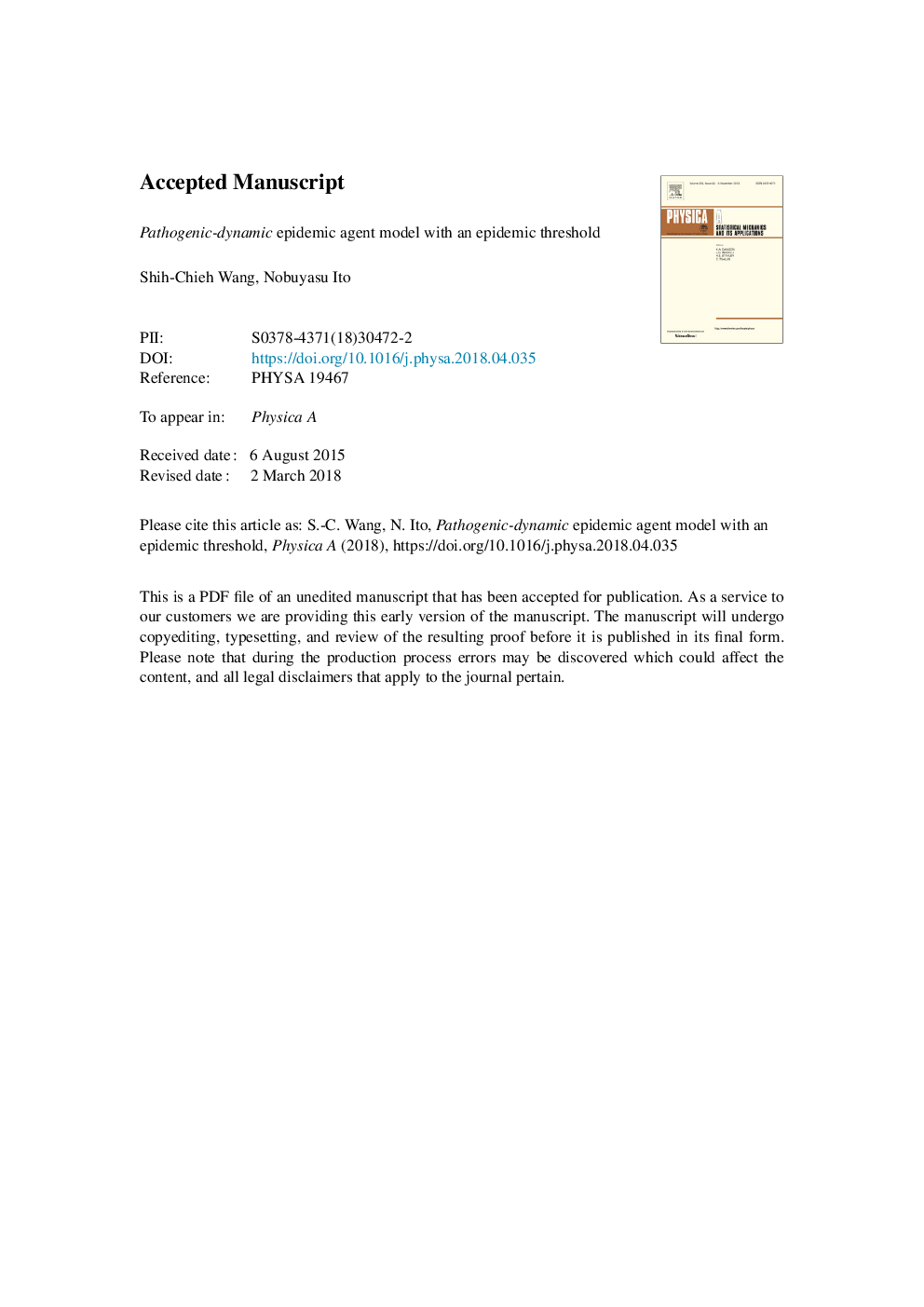| کد مقاله | کد نشریه | سال انتشار | مقاله انگلیسی | نسخه تمام متن |
|---|---|---|---|---|
| 7375424 | 1480068 | 2018 | 19 صفحه PDF | دانلود رایگان |
عنوان انگلیسی مقاله ISI
Pathogenic-dynamic epidemic agent model with an epidemic threshold
ترجمه فارسی عنوان
مدل عامل اپیدمی بیماری پاتوژن - دینامیک با آستانه اپیدمی
دانلود مقاله + سفارش ترجمه
دانلود مقاله ISI انگلیسی
رایگان برای ایرانیان
کلمات کلیدی
میزان حمله، پاتوژن ریختن، زمان بستری بیماری، سوپر گسترش،
موضوعات مرتبط
مهندسی و علوم پایه
ریاضیات
فیزیک ریاضی
چکیده انگلیسی
An agent model of epidemic spreading is proposed. When a susceptible agent is exposed to pathogen levels above its specified infection-tolerance threshold F, its state changes to infected, where a pathogen is a virus, microparasite, or any other disease-causing organism or material. The spreading sources of pathogens are the agents that are in the infected state. The growth and decay of a pathogen in an infected host obeys a given function, ft. This function increases linearly in the early period of infection t1, and then decreases linearly to zero in the latter period t2. The simulation results show that as the agent density increases, the model undergoes a phase transition from a local epidemic phase to a pandemic phase. For immobile agents, transition density ÏC equals transition density ÏP of the corresponding site percolation model. For random-walking agents, the transition density decreases as ÏCUâÏPÃUâ0.3, where U denotes the average path length of the walking agent during the period t1+t2. This model provides a reliable alternative to the standard SIR model, which is a simple compartmental model of susceptibility, infection, and pathogen removal. Moreover, it can predict epidemic phenomena using fact-based parameters.
ناشر
Database: Elsevier - ScienceDirect (ساینس دایرکت)
Journal: Physica A: Statistical Mechanics and its Applications - Volume 505, 1 September 2018, Pages 1038-1045
Journal: Physica A: Statistical Mechanics and its Applications - Volume 505, 1 September 2018, Pages 1038-1045
نویسندگان
Shih-Chieh Wang, Nobuyasu Ito,
